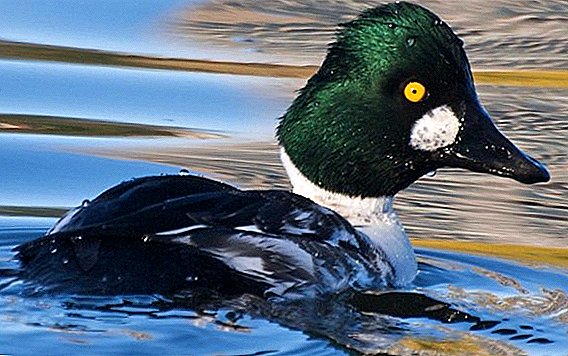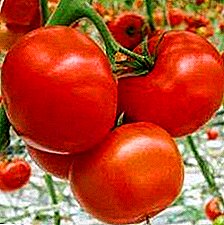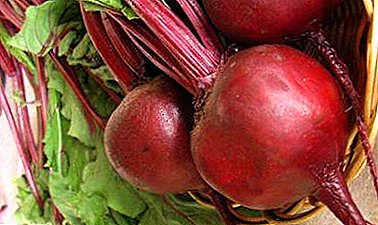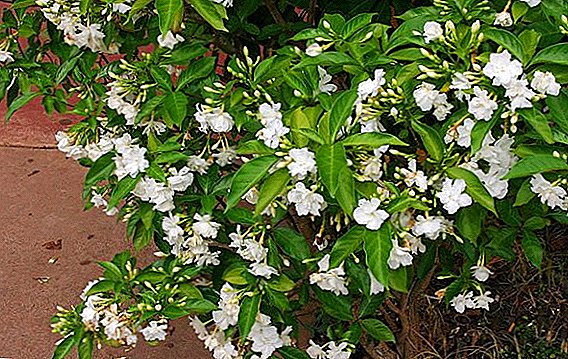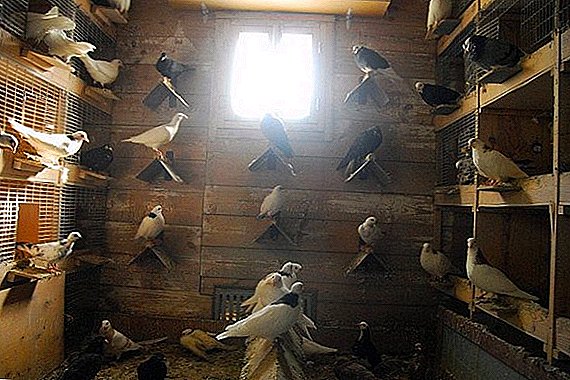 Walking through parks or city alleys, you have often admired the beauty of a mighty tree with smooth bark and a massive trunk. This elm is smooth. Its bark remains smooth until old age, and only because of some disease can it change its structure. On the other features of this tree, we describe below.
Walking through parks or city alleys, you have often admired the beauty of a mighty tree with smooth bark and a massive trunk. This elm is smooth. Its bark remains smooth until old age, and only because of some disease can it change its structure. On the other features of this tree, we describe below.
History of origin
Elm smooth, or ordinary, is one of the representatives of the elm genus. This genus of deciduous trees is very ancient, more than 40 million years old. In the wild, all members of the genus grow in deciduous forests, sometimes found in spruce.
The cultivation of the plant occurred relatively recently, three centuries ago. From this point on, elm smooth began to be used to decorate park alleys.
It is assumed that the Latin name of the elm family, lmus, comes from the Celtic word "elm" - this is what the people called this tree. The Russian word "elm" appeared, most likely due to the fact that the wood of the plant is very flexible (viscous). 
Botanical description
Elm can reach 40 meters in height. His crown looks like a wide cylinder, slightly rounded at the crown. It is formed from thick branches that are directed upwards. The trunk of an elm tree can reach three meters in diameter.
Check out common properties for elm species.
It is covered with smooth bark of brown-brown color, it cracks and peels off thin plates. At the surface of the earth, around the trunk, flat, board-like roots often form. They are necessary to maintain a massive trunk. Young shoots - light brown in color, with a slight sheen, may have a whitish plaque.
The foliage is oval or egg-shaped with a pointed end. The base is asymmetrical. In length, the leaves reach 12 centimeters, in width - about 8 centimeters. They have a dark green color, with the lower side a little lighter than the top.  Blooms tree small color, collected in bunches. The flowering period occurs in April-May, until the leaves bloom. Pollination of flowers occurs with the help of the wind. The fruit is like a small rounded leaf, inside of which is a seed.
Blooms tree small color, collected in bunches. The flowering period occurs in April-May, until the leaves bloom. Pollination of flowers occurs with the help of the wind. The fruit is like a small rounded leaf, inside of which is a seed.
Elm smooth can live to 200-250 years. Differs in growth intensity, but only up to 40-50 years - from this point on, growth gradually slows down. The tree is resistant to frost and strong winds. Low temperature can not survive only young shoots.
Durable elm wood is moisture resistant and is actively used for the manufacture of furniture, rifle butts and other products. Thanks to its shady crown, elm is well suited for arranging recreation areas in parks.
Elm grows on European lands (except for the Iberian Peninsula and Islands of Britain), in the Caucasus, in Asia Minor, in the Chelyabinsk and Sverdlovsk regions, in Kazakhstan. In the north, its growing area runs almost to the edge of the Eurasian continent. It mainly grows in mixed and deciduous forests. 
Did you know? From elm wood in the Middle Ages made water pipes.
Breeding
In nature, the tree propagates by seed or root shoots. The collected seeds can be stored in a hermetic container for about two years. Only mature specimens are suitable for planting. They are planted two weeks after maturation.
We also recommend that you familiarize yourself with the intricacies of growing such ornamental trees as holly Norway, catalpa, Japanese maple, sycamore, red oak, royal delonix, arbutus, strawberry tree, red maple, deer horn, skoumpia.
Planting and care
Since the tree grows beautifully in the wild, and care for him on the plot will not cause much trouble. 
Landing place
Before planting a tree, you must prepare a place on the site. It should be a well-lit area, light shade is permissible. The sun's rays should evenly illuminate the young tree. If one side receives more light than the other, then the density of the crown will be uneven.
The soil should be fertile, loose, well-retaining moisture. Before planting plants in the soil make lime and enrich it with fertilizers and trace elements (magnesium, nitrogen, calcium, phosphorus). Note that the soil must be acidic.
It will be useful for you to read about how to independently determine the acidity of the soil, as well as how to deoxidize the soil on the site.
Planting plant
Seeds ripen in summer. They need to immediately collect and have time to land a week otherwise germination will deteriorate. Preliminary seed preparation is not needed. At the selected site furrows are formed at a distance of 20-30 centimeters from each other. In the furrows and seeds are sown. Deepen them in the ground is not worth it.  It is enough to slightly tuck earth, forming a layer of a couple of millimeters. If the summer is rainy, then you do not need to fill the ground with seeds - the more moisture, the better for them. Planted seeds need abundant watering for several weeks.
It is enough to slightly tuck earth, forming a layer of a couple of millimeters. If the summer is rainy, then you do not need to fill the ground with seeds - the more moisture, the better for them. Planted seeds need abundant watering for several weeks.
Important! If summer is hot and dry, then the bed should be covered with a film before germination.
If you go to grow an elm from a cutting or sprout, then you can prepare planting material in late spring. Cut the stalk is treated with root formers and immersed in water. When the first roots appeared, you can land.
To do this, dig a hole with a depth of 50 centimeters, richly moisten the soil and enrich it with minerals. Sapling falls into a pit and powdered with earth. The place where the cutting is planted should be in light penumbra, since a strong sun can burn out a weak tree. Elm rooted fairly quickly. The main thing - the first week of its abundantly watered. 
Watering
With the advent of the growing season and before pruning, the tree is watered regularly. Then watering is limited. It will be sufficient to maintain uniform soil moisture. In winter, watering is extremely rare.
Fertilizers
The young tree needs additional fertilizing with organic fertilizers. The procedure is carried out once every two weeks. To increase the fertility of the soil, it is necessary to introduce sand, rubble, compost into it. Everything should be in the same proportions.
Did you know? In ancient Rome, it was believed that guardian spirits dwell in elm boxes.
Do not interfere and soil mulching. The land around the elm is covered with fallen leaves, weeds, compost. They will serve as a source of nutrients for microorganisms living in the earth. 
Pruning
In order not to thicken the crown, it should be thinned. Do it from January to April. Formative pruning is carried out in the summer. To help give the crown the necessary shape can wire. She wrapped the extra branch and leave for a year. It limits the stem thickening and helps guide it.
To trim successfully, you need:
- pruning shoots at an early age;
- try to keep the length of the branches constant;
- more often cut off the branches without foliage, so that they do not take power from the tree.
Diseases and pests
Elm smooth - unpretentious and resistant to most diseases tree. His only enemy with whom it is almost impossible to cope is the Dutch disease. It is caused by a fungus that is carried by bark beetles. Getting on the plant, the fungus prevents the normal circulation of sap along the trunk and branches.  As a result, the leaves begin to curl, the plant growth gradually slows down. Dysplasia is manifested in the untimely appearance and loss of foliage. After a while the sick tree dies.
As a result, the leaves begin to curl, the plant growth gradually slows down. Dysplasia is manifested in the untimely appearance and loss of foliage. After a while the sick tree dies.
Botanists are not worried about this disease in one country, as the number of elm trees is rapidly declining because of it, and there are still no effective methods of dealing with ailment. If an infected tree is found, it must be immediately destroyed along with the pests that carry the fungus.
Important! As a preventive measure, you should conduct regular inspections for the presence of pests, and you can also inject antibiotics into the root part of the trunk.
Another attack - shield. This is a tiny insect, similar to a flat bug. To notice it on a tree is extremely difficult, since at first glance it may seem that the trunk is covered with growths. To determine that the plant is infected, it is possible only by foliage - it is covered with white or yellow spots. Sore tree should be uprooted and burned immediately. 
Medical applications
Foliage, flowers and elm bark contains: polysaccharides, fiber, protein, oils, catechins, flavonoids, carboxylic acids, tannins. Therefore, the plant has antibacterial, diuretic, anti-inflammatory, antipyretic and enveloping effect.
The diuretic, safflower, celandine, iglitsa, asparagus, jujube, hops, lavender, cornflower, plectranthus, motherwort, black chokeberry also have a diuretic effect.
Due to such properties, elm components are actively used for:
- anti-inflammatory processes in the bladder;
- eliminate swelling;
- repair damaged muscles;
- fight against skin diseases;
- eliminate digestive disorders;
- getting rid of colic;
- quick wound healing.
Video: interesting facts about elm tree
As you can see, elm is a very unpretentious plant, but it will take many years before it starts to delight you with its magnificent crown. To achieve this as soon as possible, you must strictly follow the guidelines for planting and care, as well as carefully protect the tree from pests.


